Distinguished Ministers and Delegates:
It is a great honor to represent the United States at these sessions of the High-Level Meeting of the OECD Development Assistance Committee and, following the conclusion of the HLM, I look forward to participating in the first ever meeting of the Steering Committee for the Global Partnership for Effective Development Cooperation. I want to begin by offering my congratulations and thanks for the leadership of Brian Atwood as the DAC chair over the past two years. Under Brian’s stewardship, the DAC has reaffirmed its place as a thought-leader for the donor community and worked with partner countries, emerging donors, international organizations, and civil society to reshape the international architecture for development. Perhaps nothing symbolizes his leadership more than the successful completion of the Busan High Level Forum on Aid Effectiveness, which built upon the achievements of the Paris and Accra forums, and successfully incorporated the Monrovia and other conferences to create a strong platform to lift us into a new world of development effectiveness, results, transparency, accountability, and inclusive development.
At the same time, I would like to salute Erik Solheim for his willingness to take the baton from Brian, and build on past successes to lead the DAC to even higher levels of effectiveness and relevance. The challenges ahead are vast – in particular in playing a productive role in defining the post-2015 Development Goals framework – but Erik’s impressive record in leading development cooperation in Norway and in the development and environment community gives us great confidence in his capacity to serve the global community well.
New Donor Roles for a New World
As we look to the future of the DAC, we will all have to adapt to a changing international environment. As important as it is, official development assistance (ODA) is no longer the prime source of capital investment for developing countries, and no longer has the principal role in filling savings gaps. For the United States, for example, our ODA this year will total about $30 billion, the world’s largest level by far. And yet private Americans give some $40 billion each year to international relief and development efforts through civil society institutions, faith-based groups, academic institutions and corporate social responsibility. Another $100 billion is sent by American citizens and residents to developing countries in remittances. Equally important, some $1 trillion in investment capital flows from the U.S. to developing countries from all sources each year. Private capital flows have increased seven fold over the past decade.
As a result, we need to consider the new roles that providers of development assistance must fill in the development continuum. We need to use our resources to make strategic investments, targeting the constraints to growth in our partner countries. We need to use our convening authority to bring all parties – including governments, civil society, business, and international financial institutions – to the table. We need to reduce the risk for others, such as private investors and host governments, through innovative insurance schemes and capital investment funds. We need to take calculated risks ourselves where others may fear to tread, always aware that we must be good stewards of taxpayers’ dollars.
We need to be the catalyst for new partnerships, and the source of norm-building in international forums. And perhaps most important, we must support developing country governments, civil society, and business communities to assert effective ownership over their own development efforts, including through generation of domestic resources through effective tax administration, anti-corruption efforts, and asset recovery programs.
Change and Continuity after 2015
Nowhere will these roles be more important than in our work to define the priorities for global development in the wake of the MDG process concluding in 2015. The discussion is already well underway, especially through the UN Secretary General’s High Level Panel, and the DAC must play an active role in these discussions. We must redouble our efforts to achieve the current MDG targets in the three years that remain before their conclusion. We must encourage the international development community to be bold in its vision, and concrete in its execution.
We have been discussing today having the DAC endorse a single-minded vision of a global pledge to eliminate extreme poverty worldwide within a generation. This is an ambitious but achievable target. Over the past two decades, the world has succeeded in moving 600 million more people above the poverty line. Child mortality rates have plummeted by a third in that same period, and improvements in other social indicators and MDG targets have been equally impressive.
We can define our goal – eliminating extreme poverty – in poetry, but we must achieve it in prose by looking at the underlying factors that drive poverty: food insecurity, poor health, political and economic fragility, insecurity in the face of natural disasters and conflict, and weak governance – all hallmarks of poor countries. Accordingly, the key to eliminating global poverty is found in the title of this speech – inclusive development. In this regard, we should incorporate in our vision for the future the important steps and collective commitments we have taken in the recent past. We need to reinforce the continuity of our efforts. I am often asked, “What comes after 2015?” My response is invariably, “2016.”
Furthermore, we must be modest in terms of our capacity to anticipate changes in the international development landscape, and build in flexibility in responding to new developments. As the astute development theorist Yogi Berra once said, “It’s hard to make predictions, especially about the future.”
For example, at the Child Survival Summit hosted in Washington last summer, the world came together to commit ourselves to eliminate preventable child mortality within a generation. Similarly, work by the African Union, European Union, the United States and other entities in the area of resiliency is well advanced: using our collective efforts in the Horn of Africa as a model – in which socio-economic “safety nets” kept millions of people from displacement in the face of a massive drought – we are working together on issues related to disaster risk reduction, preparatory actions, climate change adaptation and remediation, creation of safety nets, and better predictive instruments.
At the same time, the New Alliance for Food Security, the New Deal for Fragile States and the Open Government Partnership are driving our efforts in these areas effectively and cooperatively with host governments, the private sector and civil society. In the latter area of encouraging citizens to hold their governments accountable for transparent, non-corrupt, and effective development, we have just launched in Washington a grand challenge called, Making All Voices Count, to identify new technological and innovative approaches.
Transparency Begins at Home
On transparency, we must demonstrate our commitment through our own behavior. In this regard, the United States was pleased to sign onto the International Aid Transparency Initiative (IATI) last year, and we welcome the consideration by the DAC of serving a hosting role for this initiative in the future.
The DAC is addressing a knotty issue of the accounting for development loans in the context of measuring ODA flows. This issue does not affect our country, since we do not extend such loans, but we believe this issue must be resolved in a transparent manner if the DAC is to maintain its credibility. In the event that a solution cannot be identified at this time, we must insist on full transparency, especially in the run-up to consideration of definitional changes likely to occur within the next two years.
Partnering for Inclusive Development
As noted before, the U.S. government is committed to partnerships with the private sector, having engaged in more than 1200 such partnership over the past decade. At the Rio+20 meeting this past summer, we came together with the Consumer Goods Forum (CGF) came together to address the issue of deforestation. The CGF represents 450 of the world’s largest companies, with total sales of $3.1 trillion each year. Recognizing the importance of creating sustainability in their supply chains, and serving as good corporate citizens, these companies committed to achieve zero net deforestation of tropical forests in the supply chain for soy beans, palm oil, pulp/paper, and beef by 2020 – a goal strongly supported by many of the developing countries in which these companies operate. Working collectively, we are now linking with host country governments, civil society, and other institutions to turn this pledge into tangible action plans for achieving this ambitious yet achievable goal.
One additional principle that must apply to our post-MDG efforts is that of inclusive development. We have learned over the past decades that development is much more than achieving high levels of economic growth. Development must be inclusive intwo ways. First, it must impact the lives of all citizens, not just the wealthy and the empowered. Inclusive development should encourage equality in income and wealth distribution, create jobs, and address basic needs in health care, education, housing, and food security.
Second, and equally important, inclusive development must draw on the contributions of all citizens, including previously marginalized and disempowered groups. In particular, it must include women, people with disabilities, indigenous groups, youth, the LGBT community, and religious and ethnic minorities as planners, implementers and beneficiaries of all that development drives. We have an expression at USAID: “Nothing about them without them.” Our work must include specific programs for the economic and political empowerment of these people, but also mainstream and integrate gender, disabilities, sexual orientation and related issues into our full development programming. It is not enough for the ministry of women’s affairs attend to gender equality and female empowerment; such concerns must drive the work of all ministries throughout the system, including the ministers of education, health, commerce, and finance.
The Role of the Global Partnership
Turning to the Global Partnership for Effective Development Cooperation, we need to adopt an equally bold vision to ensure that we are as innovative, up-to-date and accountable in “how” we do development cooperation as in “what” we are seeking to achieve. Even in the face of growing fiscal constraints around world, much is possible – indeed, the very tightness of development assistance budgets forces us to come up with better and more accountable procedures, institutions, and systems. As Chicago Mayor Rahm Emmanuel has said, “Never waste a crisis.”
We strongly support the four key areas already established for the Global Partnership’s mandate. First, we need to maintain and strengthen the political momentum for more effective development cooperation. Second, we must ensure accountability for implementing our collective commitments at Busan. Third, we need to facilitate knowledge exchange and sharing of lessons learned. And finally, we must support the implementation of Busan commitments at the country level, where the rubber meets the road.
We appreciate the work of the Joint Support Team in advance of the first meeting of the Global Partnership Steering Committee. In particular, we support their focus on developing the monitoring and evaluation system, endorsed by all parties that will provide transparent, useful data at both the global and country levels, capable of tracking progress and yielding lessons learned. We have made good progress in articulating the indicators for predictability, on-budget assistance, mutual accountability, use of country systems, and untying aid. Additional work on the other five indicators – country results frameworks, civil-society enabling environment, private sector engagement, transparency and gender equality – is still required. All ten of these areas are all central to the U.S. Government’s own development assistance framework, and we are committed to sharing our experience with our development partners in spelling out these indicators.
We also welcome the efforts of the Post-Busan Interim Group to reach out to the broad constituencies whose expertise and aspirations are key to achieving inclusive development. The Global Partnership itself must operate in an inclusive and transparent manner. Thus, in addition to the steering committee – which includes representatives of donors, partners, the private sector, civil society, parliamentarians, multilateral development banks, the OECD/DAC and U.N. institutions – we should draw on the contributions of regional organizations, such as the African Union, the Organization of American States, and ASEAN; state and local governments; trade unions; advocates for women, people with disabilities, indigenous groups, and the LGBT community; and faith-based organizations.
We should continue to integrate the experience of providers of South-South and triangular cooperation – including China, India, South Africa, Indonesia, South Korea, Brazil, Mexico ,and others – and ensure that they are contributing to our discussions, sharing and reflecting in their own assistance programs the growing consensus on how best to achieve maximum development impact from our collective investments.
This collaboration is vital: No government or institution has a monopoly on financial and human resources, good ideas, ground truth, or moral authority.
Datapaloozas, Hack-a-Thons, Grand Challenges, and Solutions Networks
This is particularly true when it comes to incorporating science, technology, and innovation into development. Coming back to the U.S. Government two years ago after a five-year stint in the NGO community, I had to learn a new language: suddenly, people were talking about crowd-sourcing, grand challenges, development innovation ventures, datapaloozas, and hack-a-thons. I always thought computer hackers were evil people, but now I find my agency working with a group calling itself “Random Hacks of Kindness.”
At USAID in particular, we consider this focus on science, technology and innovation a return to our roots. As an agency, USAID has a proud history in this arena, including helping promote research that undergirded the Green Revolution and oral rehydration therapy. In our renaissance efforts, we are helped by our own demographic make-up. At present, more than half of our international staff have been at USAID for less than three years, with increasing numbers coming to us from tech companies, university research centers, and innovative NGOs. We have also brought on more than four dozen fellows from the American Academy for the Advancement of Science.
We are reaching out to offer innovators opportunities to apply their scientific and technological know-how to develop solutions to clearly defined but seemingly intractable problems. For example, we have now launched four Grand Challenges for Development, designed to engage the whole of society in identifying adoptable, sustainable, scalable answers to our toughest challenges.
With Norway, Canada, the UK, and the Gates Foundation, we launched “Saving Lives at Birth” to identify and scale up transformative prevention and treatment approaches for pregnant women and newborns in underserved, low-resource settings around the time of birth. With Australia and World Vision, we launched “All Children Reading” to improve early-grade reading outcomes and address childhood illiteracy. “Powering Agriculture,” launched with Sweden, Brazil, Duke Energy, and the U.S. Department of Agriculture, invests in finding new ways to bring clean energy to farmers for production, processing and storage through sustainable and scalable solutions. And “Making All Voices Count,” a partnership with Sweden, the UK, and the Omidyar Network will help grow the global movement for open government, transparency, and accountability, helping officials listen and respond to citizens while improving their performance.
Another new approach is the Higher Education Solutions Network. Partnering with seven universities in the United States and Africa, we have created a constellation of development labs to catalyze new scientific and engineering approaches, targeted directly at global development challenges. The lead universities include Duke, Makerere, Michigan State, MIT, Texas A&M, UC Berkeley, and William and Mary. Working with consortia that include the private sector, research institutes, innovative NGOs, faculties and students approach, these labs will discover and disseminate solutions in such areas as global health, food security, and chronic conflict. The labs will also test and evaluate new technologies and provide a repository for essential data. While the network is targeted toward the priorities of our own agency and our missions abroad, its output will serve the broader development community as a global good.
We are particularly encouraged by the role of students in this effort. Already, university faculty and students are developing new approaches to age-old problems, whether it is using specialized lenses for cell phones to permit better and quicker in situ diagnoses of diseases like malaria and tuberculosis, developing low-cost water filtration systems to take arsenic out of drinking water, or devising apps that permit consumers to discover whether trafficked workers or conflict minerals were used in products they are about to buy.
Our Collective Stake in Global Development
In conclusion, I hear frequently questions about the staying power and political will of the donor community to sustain development assistance in the face of tight fiscal environments in our countries. In this regard, the changes I have described are essential to ensure continuing public and legislative support. If we can show taxpayers, Congress, civil society and private donors alike that we are producing measurable and sustainable results, that we are good stewards of their dollars, and that we are channeling their resources through a modern development enterprise, they will continue to support us. Because ultimately, I think the American people – along with the citizens of other donor countries – get it.
They know that prosperity and human security abroad promotes our collective national security interests, economic interests, and values.
It is in our national security interest. Stable, prosperous countries are less likely to traffic in arms, drugs, and people; less likely to send off large numbers of refugees across borders and oceans; less likely to host terrorist training camps and pirates; less likely to incubate and transmit pandemic diseases; and less likely to need peacekeeping forces on the ground.
Development is in our economic interest as well. Growth in developing countries will be the primary market for exports and trade-related job creation over the next decades. Most of the fastest growing export and investment markets for the United States are in former or current ODA recipient countries. There are also huge opportunities available for building infrastructure, including clean energy and telecommunications, as well as providing technical assistance.
Equally important, the people of our countries want to live in a world that’s peaceful, prosperous, democratic, and respectful of human rights and human dignity. In a changing global landscape, the generosity and humanitarian spirit of the global community is one thing that has not changed. Thank you.

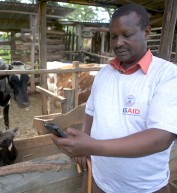
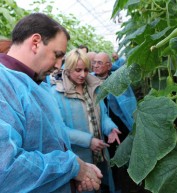
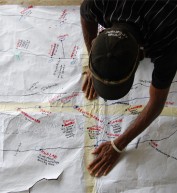
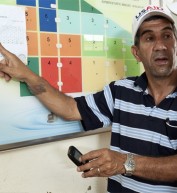

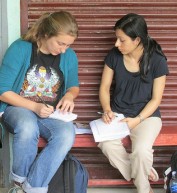
Comment
Make a general inquiry or suggest an improvement.